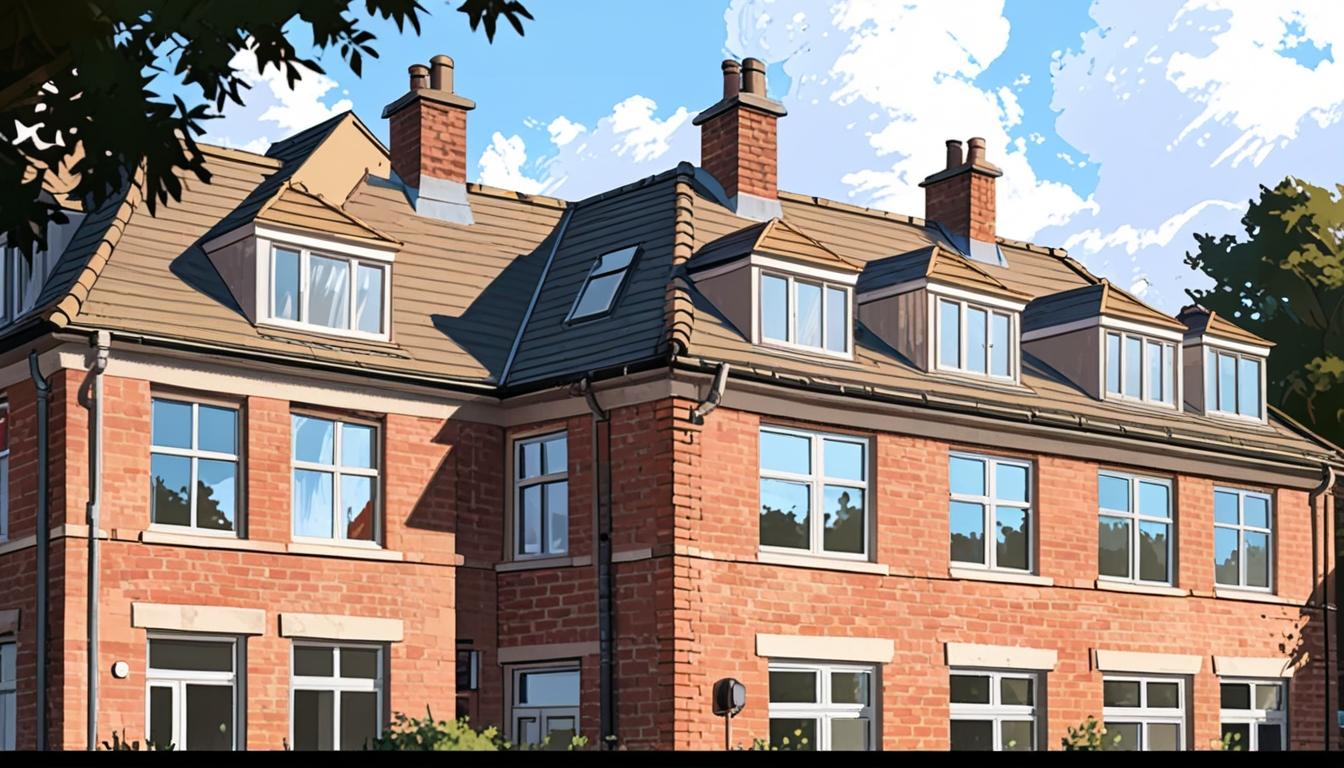Neighbours in Slough express outrage after the Planning Inspectorate overturns council rejection of an unapproved loft conversion on a care home, raising concerns over loss of privacy, breach of planning rules, and unlicensed property use.
Furious neighbours in Slough are raising their voices against a recent decision by the Planning Inspectorate to approve a loft conversion that many consider an eyesore, compromising the character of their residential community. The property in question, currently functioning as a care home, has undergone extensive alterations without prior planning permission, leading to a series of disputes between the residents and its owners, Macadamia Support.
Initially, Slough Council rejected the retrospective planning application for a set of extensions in October 2022, reasoning that the changes would be detrimental to the neighbourhood’s character and visual amenities. The council underscored that the development did not respect the unique design qualities inherent to the area, designated as a Residential Area of Exceptional Character (RAEC). This designation typically limits two-storey side extensions to prevent terracing and maintain crucial spacing between buildings.
Despite this opposition, the owners appealed the decision, and the Planning Inspectorate subsequently approved the application, leading locals to fear a flouting of planning regulations. The inspectorate argued that the alterations were not “visually intrusive nor harmful” to the original property or its surroundings. However, this conclusion starkly contrasts the sentiments expressed by the community, who worry that the decision may encourage others to bypass planning controls, leading to a chaotic building environment.
Local residents have articulated their concerns, noting the significant loss of privacy caused by the side dormer windows, which overlook neighbouring homes. One resident voiced his frustration, stating that the new windows invade personal space and disrupt sleep, with light and noise spilling into their home. Another neighbour lamented the potential long-term implications of this decision, fearing it sets a “precedent” that other homeowners might follow, effectively eroding the governance and standards typically upheld by local councils.
Compounding the dissatisfaction are complaints about noise arising from the care home’s operations. While the property was initially a detached family residence, its current use has introduced disruptions that residents claim were neither anticipated nor consulted upon. This has raised questions over how the building’s functionality has shifted without adequate local engagement or consideration for existing residents’ experiences.
Critically, the inspectorate’s approval highlights a worrying trend in planning practices, especially regarding retrospective permission. The UK government allows local authorities to grant retrospective applications to regularise such alterations, yet this flexibility also increases the potential for residential developments to expand beyond acceptable boundaries. Residents point out the implications of these approval processes, questioning the effectiveness of planning enforcement and the significance of compliance with regulations designed to protect communal spaces.
Further worries stem from the operational status of the care home, which the residents claim lacks necessary licensing, highlighting an overdue conversation about regulatory oversight in the care sector. Coupled with unsightly visual aspects, such as a large industrial bin in the vicinity and insufficient parking, the situation showcases the myriad concerns stemming from the unregulated use of properties in residential areas.
In response to the community’s disenchantment, a spokesperson for Slough Borough Council expressed disappointment at the inspectorate’s decision, notably revealing the inherent tension between local governance and higher planning authorities. Despite the council’s efforts to maintain a balanced community environment, the perceived disregard for their initial rejection bolsters the residents’ sense of violation, fuelling further discord in the neighbourhood.
As these developments unfold, Slough residents remain steadfast in their opposition, advocating for stricter adherence to planning protocols that honour the character and tranquility of their homes. With mounting tensions and ongoing changes in the area, the debate continues about the delicate balance between individual property rights and community integrity in urban planning.
Reference Map
- Paragraph 1-3: [1]
- Paragraph 4-5: [1]
- Paragraph 6-8: [1]
- Paragraph 9-10: [1]
- Paragraph 11-13: [1]
- Paragraph 14-15: [1]
Source: Noah Wire Services
- https://www.dailymail.co.uk/news/article-14687821/Our-neighbour-built-extension-without-permission-allowed-people-want.html?ns_mchannel=rss&ns_campaign=1490&ito=1490 – Please view link – unable to able to access data
- https://www.gov.uk/guidance/ensuring-effective-enforcement – This UK government guidance outlines the responsibilities of local planning authorities in enforcing planning control. It defines breaches of planning control, details enforcement actions, and discusses the time limits for taking enforcement action. The document emphasizes the importance of early engagement with property owners and the potential consequences of non-compliance, including criminal liability and the invalidation of planning permissions. It also covers the procedures for issuing enforcement notices and the implications of retrospective planning applications.
- https://www.planningportal.co.uk/permission/responsibilities/planning-permission/retrospective-planning-permission/ – The Planning Portal provides information on retrospective planning permission, explaining that if unauthorized development has occurred, a local authority can request a retrospective planning application. The application is treated like any other, and refusal may lead to an enforcement notice requiring the restoration of the original state. The portal also notes that certain developments may become lawful after a specified period, eliminating the need for retrospective permission.
- https://www.cogeo.co.uk/news/retrospective-planning-permission – This article discusses the implications of retrospective planning permission in Scotland, highlighting a 2022 legislative change that allows planning authorities to impose a surcharge of up to 25% on such applications. It advises developers and landowners to ensure compliance with planning regulations before commencing work to avoid potential penalties and complications, emphasizing the importance of pre-application inquiries and certificates of lawfulness.
- https://www.gov.uk/guidance/use-of-planning-conditions – This UK government guidance details the use of planning conditions in granting planning permissions. It explains that conditions can be imposed to mitigate the impact of development and that non-compliance with these conditions may lead to enforcement action. The document also covers the process of appealing against planning conditions and the implications of retrospective planning applications under section 73A of the Town and Country Planning Act 1990.
- https://cms-lawnow.com/en/ealerts/2022/09/cil-exemption-for-self-built-housing-not-available-for-retrospective-planning-permission – This article discusses a 2022 Court of Appeal ruling that the exemption from the Community Infrastructure Levy (CIL) for self-builders does not apply to developments authorized by retrospective planning permission. It explains that for the exemption to be valid, the person must assume liability to CIL after planning permission is granted but before development commences, which is not possible in retrospective cases.
- https://www.buckinghamshire.gov.uk/planning-and-building-control/building-or-improving-your-property/apply-for-retrospective-planning-permission/ – Buckinghamshire Council provides guidance on applying for retrospective planning permission. It states that if building work has been done without proper permissions, an application can be made through the Planning Portal. The council treats the application in the usual way, and if refused, an enforcement notice may be issued, requiring the restoration of the original state. The page also notes that certain developments may become lawful after a specified period, eliminating the need for retrospective permission.
Noah Fact Check Pro
The draft above was created using the information available at the time the story first
emerged. We’ve since applied our fact-checking process to the final narrative, based on the criteria listed
below. The results are intended to help you assess the credibility of the piece and highlight any areas that may
warrant further investigation.
Freshness check
Score:
8
Notes:
The narrative references recent events and decisions, such as the Planning Inspectorate’s approval of a loft conversion, which suggests it is relatively recent. However, specific dates for the most recent events are not provided in the article.
Quotes check
Score:
6
Notes:
While there are direct quotes from residents expressing their concerns, the original source or date of these quotes is not specified. The lack of specific sourcing makes it difficult to verify their origin.
Source reliability
Score:
7
Notes:
The narrative originates from the Daily Mail, which is a well-known publication but can vary in reliability depending on the topic and context. The Daily Mail is generally seen as having a right-leaning bias.
Plausability check
Score:
9
Notes:
The claims about a planning dispute and community opposition to a development are plausible given the context of similar disputes in residential areas. The narrative aligns with common concerns about property developments and community impact.
Overall assessment
Verdict (FAIL, OPEN, PASS): PASS
Confidence (LOW, MEDIUM, HIGH): MEDIUM
Summary:
The narrative appears to be based on recent events, though specific dates and quote sources are lacking. The plausibility of the claims is high, but the reliability of the source is moderate due to its potential bias. Overall, the narrative is generally plausible but requires further verification for absolute accuracy.













